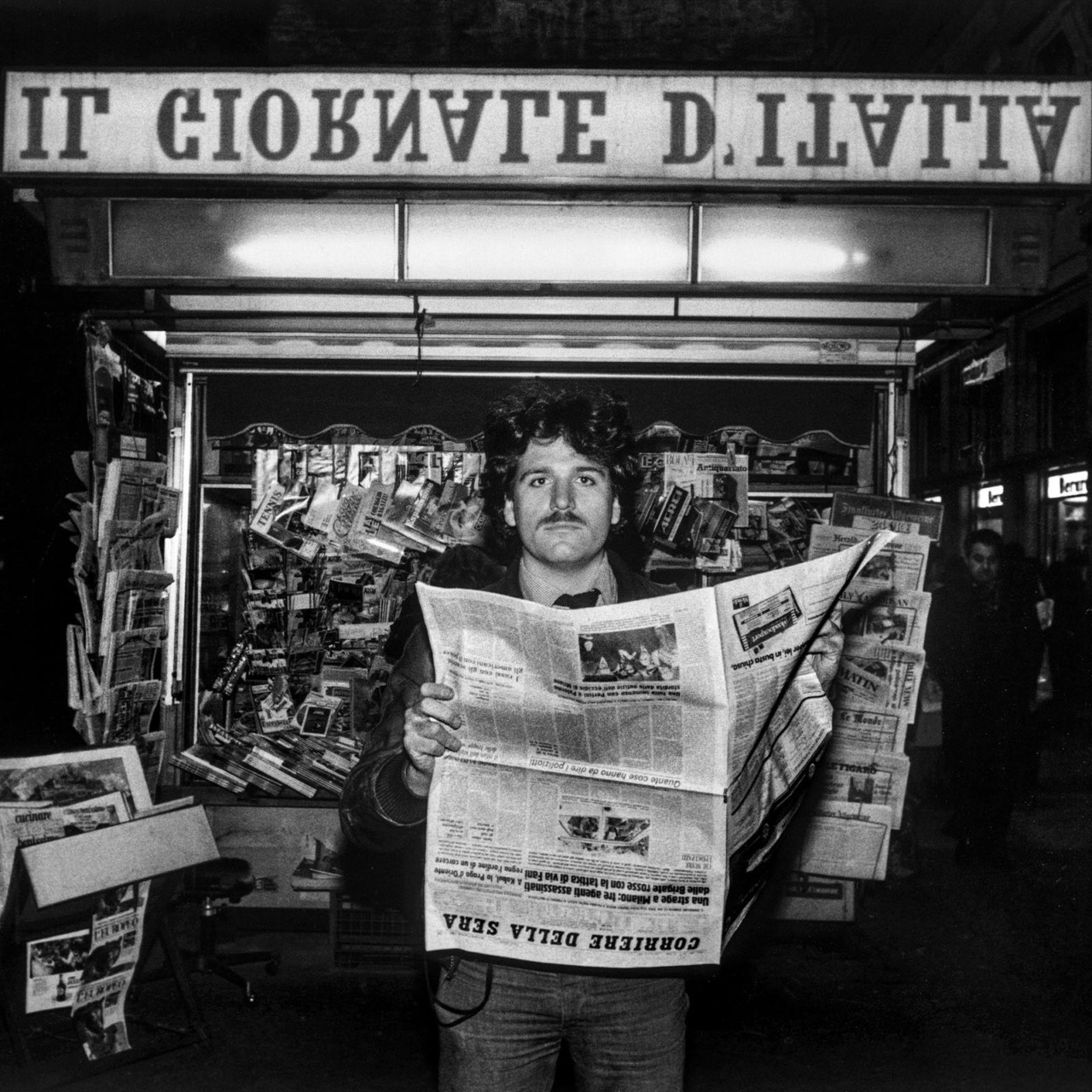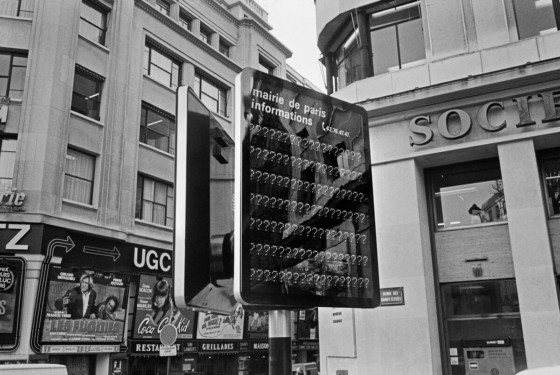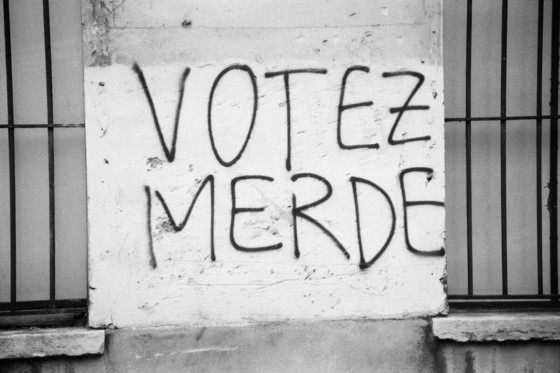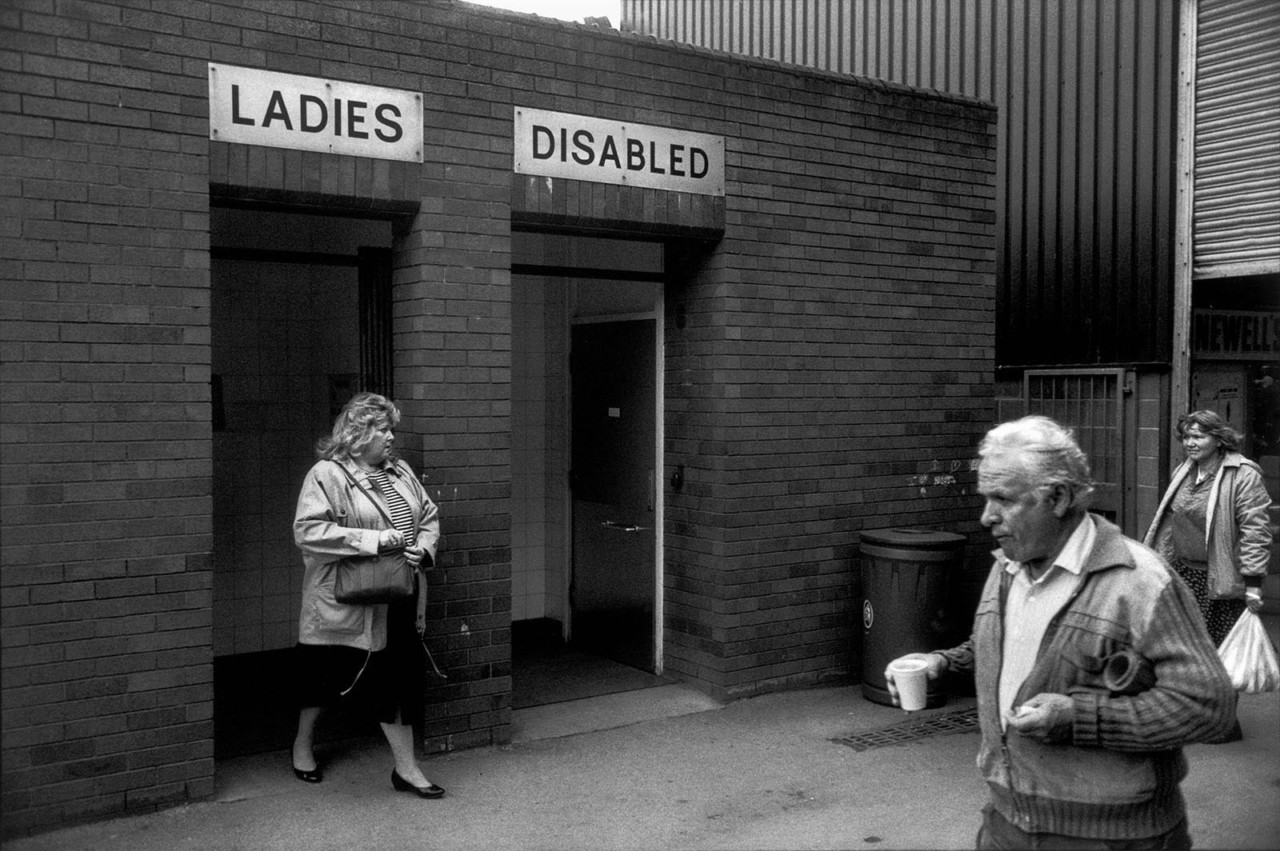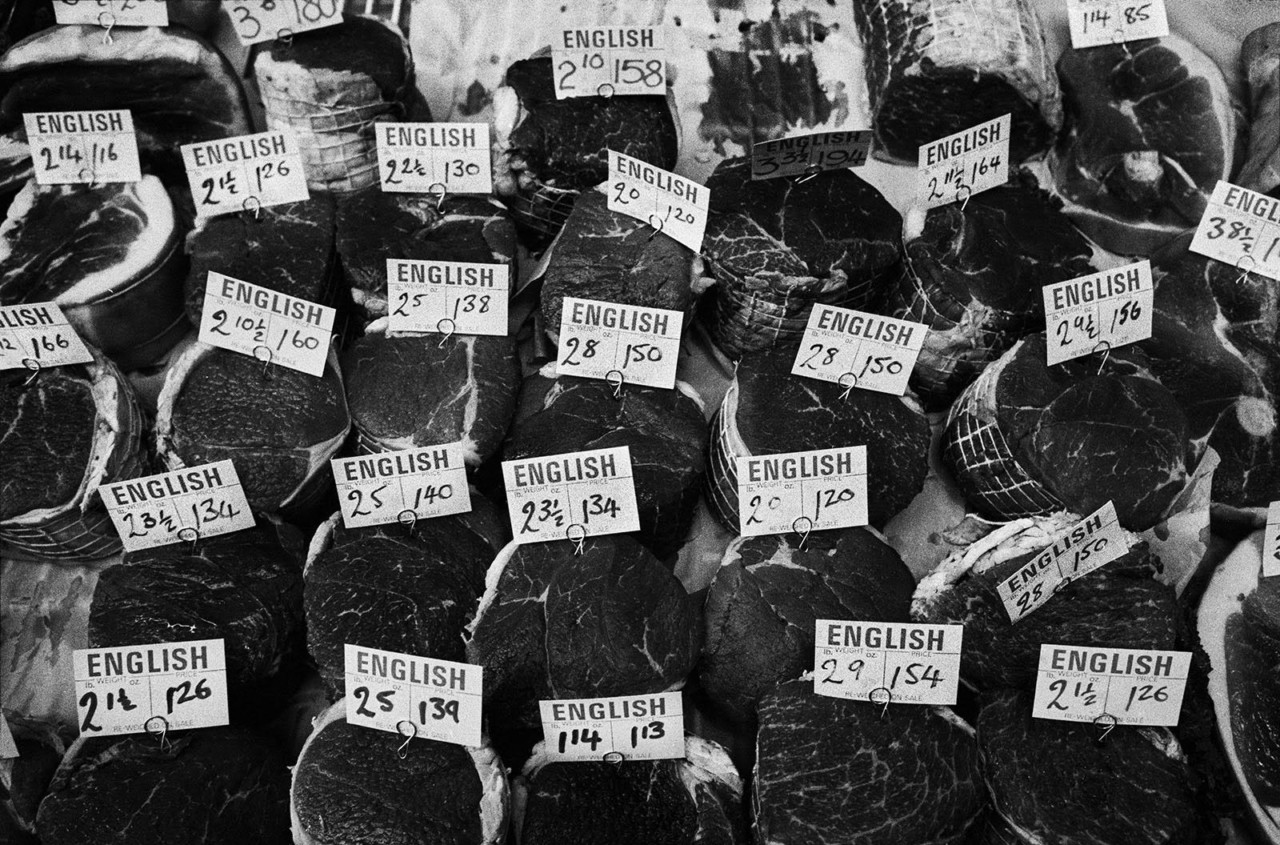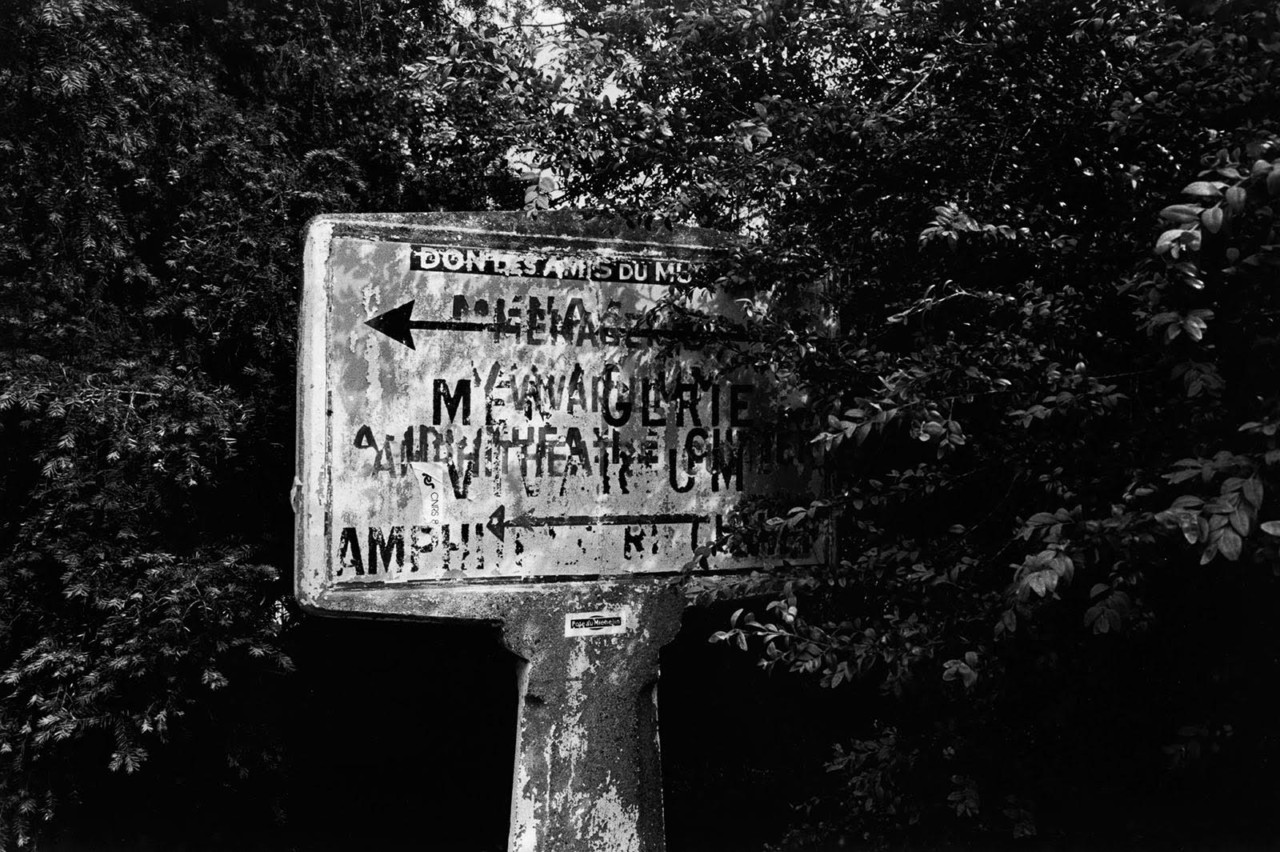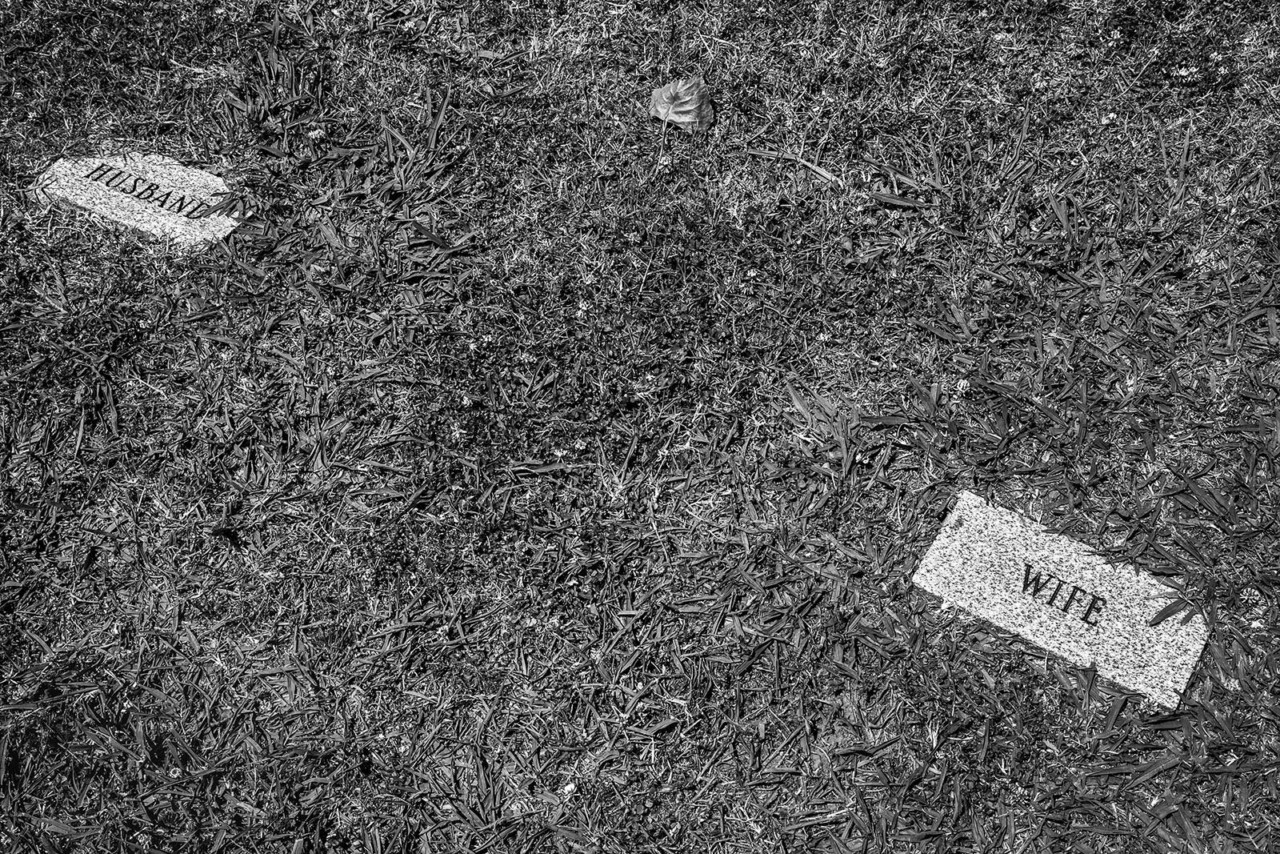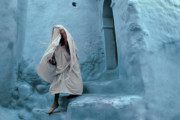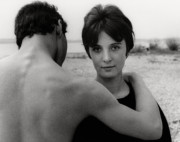Richard Kalvar’s Selected Writings
From billboards and advertisements to gravestones and graffiti, Kalvar's latest photobook explores a selection of unexpected, and humorous, writings from around the world.
For over fifty years, Richard Kalvar has been photographing humans. Or more precisely, “Humans and things that seem to look or act like them: dogs, bears, birds, trees…,” he writes in the foreword to his latest photobook, Selected Writings, published by Damiani.
Gathered at the Magnum Gallery in London one evening in November for his unofficial UK book launch, Kalvar starts the talk by presenting a selection of images from his acclaimed photobook, Earthlings, published 15 years ago and now out of print. Ambiguous, often disorienting scenes fill the screen as he scrolls through the presentation. Snapshots of unposed people in places that hardly seem, well, real. This has become Kalvar’s trademark: images that are not straightforward or self-explanatory, but strange and surreal. Images that you need to spend time looking at to figure out, and even then, still leave you wondering. But his new book, he then announces to the audience as the presentation changes, is “a little different.”
“LOSER.” the t-shirt of a young man blares out to innocuous passers-by on the New York subway, a mock expression of shock on the man’s face. “???????????????????” announces an important — yet highly existential — message from City Hall in Paris on a public announcement board in the 80s. “VOTEZ MERDE” (or ‘Vote shit’) is scrawled across a wall somewhere else in the city a decade later, missing that all-important comma.
Billboards, gravestones, graffiti, signs, and scrawlings light up the screen as Kalvar presents a series of images from the new book, more often than not accompanied by a chorus of laughter from the audience as one slide changes to the next.
“All the while that I’ve been photographing people, I’ve also been photographing other things that have caught my eye,” Kalvar explains to the audience. “Sometimes I would see a funny sign or a peculiar bit of graffiti, and I’d just take a picture. Not necessarily because I felt it was a great picture, but because it was amusing.”
Over five decades of photography, Kalvar would store these images away in the Magnum archive, tagging them with the word ‘signs’ if the image had any writing on it. But it wasn’t until he was having trouble working on the sequel to Earthlings, and in need of a distraction, that he decided to dive back into his archive to see what he’d gathered over the years. After spending time playing around with the images and sequences of the 150 images he found, (“It never gets easier,” he admits to a member of the audience), he narrowed down the selection to 69 images, which now make up the highly original, and highly amusing photobook.
"It’s the same person taking these pictures, so it’s in the same spirit, but in this case all the pictures are about writing — other people's, not mine."
-
In 1965, 20-year-old Richard Kalvar decided to abandon his university studies in English and American literature. He returned to his native New York to look for a job and somehow wound up as an assistant to French fashion photographer, Jérôme Ducrot. Knowing absolutely nothing about photography at the beginning, he was soon bitten by the bug, not in fashion but roaming the streets of the city taking unposed pictures of people with a camera borrowed from his boss. Five years later, he emigrated to Paris as a fully-fledged professional photographer, where he is still based today.
Over the years, his travels have led him to various countries and cities around the world, which now provides a real diversity in language and location within this book, with the final selection spanning over fifty years of his photography. Images from his hometown of New York — and his adopted hometown of Paris — are joined by a selection of writings from Tokyo, London, Naples, Leeds, and more.
Kalvar explains how this multilingualism led to a whole new challenge for him as he started putting the book together: the language barrier. “As I was showing photos in the book dummy to people, mainly friends and colleagues, I realized that I couldn’t treat them in the same way that I treat my other pictures,” he explains. “In the past, whenever I made a book, or a show, I’d usually put in very succinct captions, just the place name and the year. I didn’t want to use words to force a particular interpretation on people. I wanted them to look at the picture directly, and come to their own interpretations using their imagination. But it turns out I couldn’t do that with images with writing in them.”
Without understanding the written words, he realized, it was impossible to appreciate the photograph and understand its significance and humor. And so the photographer had to become a writer, coming up with a caption in both English and French to accompany each image, thus making sure that nothing is lost in translation.
This challenge has left Kakvar with some anecdotes from over the years. “Around three years ago, I showed this picture to a Japanese friend, not knowing what the writing meant but just thinking that it looked sweet,” he explains to the audience, pausing on an image of a patient-looking dog sitting in a box inscribed with Japanese writing. The dog is being petted by a woman who looks far more delighted about it than him. “She told me that the writing actually says ‘I do not like to be touched.’”
Kalvar’s narration throughout the book is always humorous, sometimes mischievous. Selected Writings reveals the voice — and sense of humor — behind his inimitable photographic vision.
The photobook itself, published by Damiani in a square format and printed in Italy, presents 69 images and their bilingual (English and French) captions. Signed copies of the book are now available to order from the Magnum Shop, and special editions which include signed prints, are available from Kalvar here.


